Cameroon Flag Meaning
Three vertical stripes of green, red, and yellow with a yellow five-pointed star in the center of the red stripe, representing the forests, unity, the sun and savanna, and the unity of the diverse peoples of Cameroon.
- Continent
- Africa
- Adopted
- 1975
- Ratio
- 2:3
- Colors
- green, red, yellow
- Designer
- Unknown
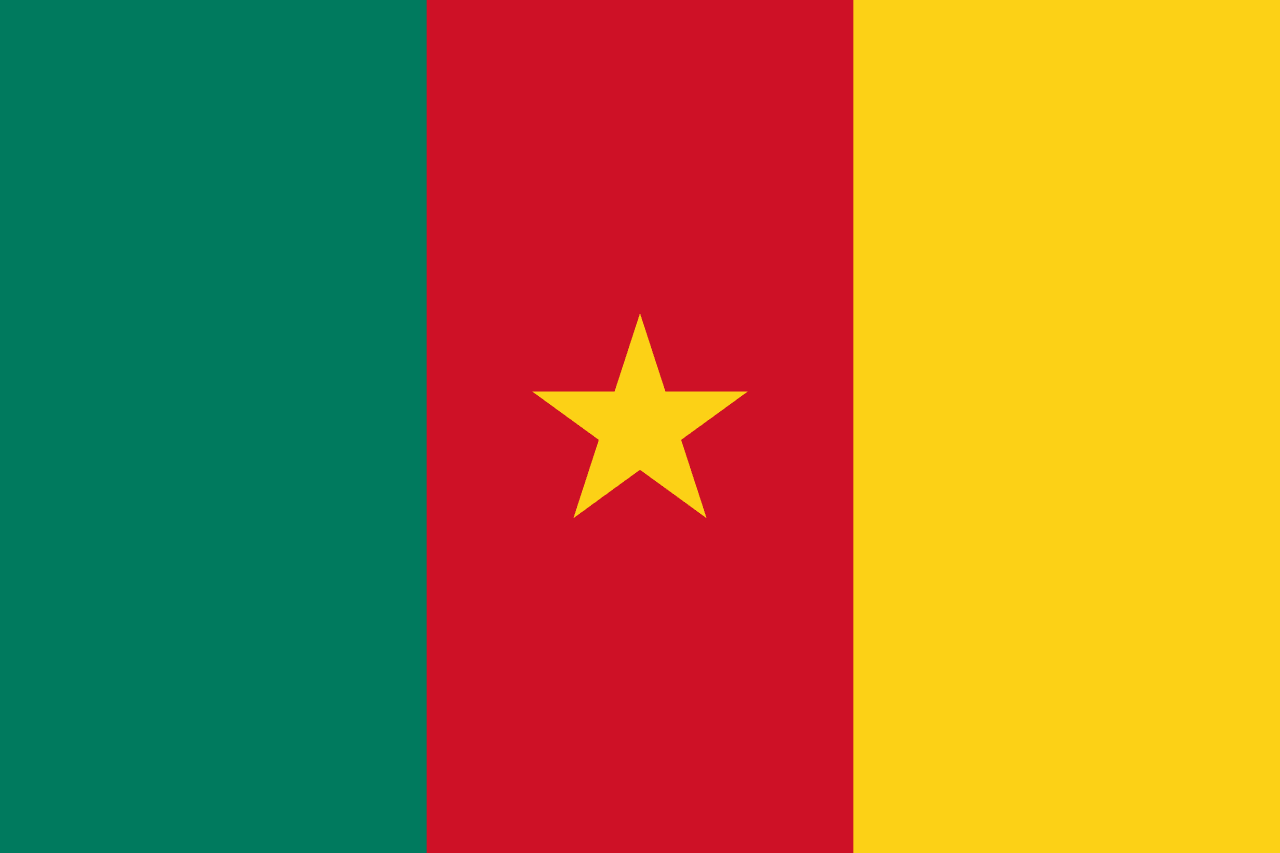
Symbolism
Green Stripe: Represents the dense tropical forests of southern Cameroon and the hope for prosperity, symbolizing the rich natural heritage and the lush vegetation that covers much of the country's landscape.
Red Stripe: Represents the unity that binds the north and south regions together, symbolizing the blood of independence heroes and the common bond that unites Cameroon's diverse ethnic groups and linguistic communities.
Yellow Stripe: Represents the sun and the northern savanna regions, symbolizing the golden grasslands, the bright future of the nation, and the happiness and prosperity that Cameroonians strive to achieve.
Yellow Five-Pointed Star: Represents the unity of the state and the guiding star of the nation, symbolizing the centralized republic and the hope that leads Cameroon toward progress and development.
History
- Pre-1884: The region was inhabited by diverse ethnic groups including the Duala, Fulani, and many others, with sophisticated kingdoms and trading networks connecting the coast to the Sahel and beyond.
- 1884-1916: German colonization established Kamerun as a protectorate, developing infrastructure and plantations while suppressing local resistance and imposing European administrative systems.
- 1916-1960: After Germany's defeat in World War I, the territory was divided between France (East Cameroon) and Britain (West Cameroon) under League of Nations mandates, creating linguistic divisions that persist today.
- January 1, 1960: French Cameroon gained independence as the Republic of Cameroon under President Ahmadou Ahidjo, adopting a flag with green, red, and yellow vertical stripes representing Pan-African unity.
- October 1, 1961: British Southern Cameroons joined the Republic of Cameroon following a plebiscite, creating the Federal Republic of Cameroon with two distinct linguistic regions (French and English-speaking).
- May 20, 1972: The federal system was abolished, creating the United Republic of Cameroon as a centralized state, though maintaining both French and English as official languages.
- May 20, 1975: Cameroon added a yellow star to the center of the red stripe on the flag, symbolizing national unity under the centralized republic and the guiding principles of the state.
- 1982-Present: Paul Biya became president and has remained in power for over 40 years, with the flag representing both political continuity and ongoing challenges related to governance and regional tensions.
- 2016-Present: The Anglophone Crisis has created significant tensions between English-speaking and French-speaking regions, with separatist movements challenging the unity symbolized by the flag.
Trivia
- Cameroon is often called 'Africa in miniature' because it contains all the major geographic and cultural features found across the African continent.
- The flag represents a country with over 280 languages spoken, making it one of the most linguistically diverse nations in the world.
- Cameroon is the only country in the world with both English and French as official languages due to its colonial history under both British and French administration.
- The country is home to Mount Cameroon, an active volcano and the highest peak in West and Central Africa, rising 4,040 meters above sea level.
- Cameroon's football team, known as the Indomitable Lions, was the first African team to reach the World Cup quarterfinals in 1990.
- The flag flies over a country that is a major producer of cocoa, coffee, and cotton, with agriculture employing about 60% of the population.
- Cameroon has significant oil reserves and is Central Africa's largest oil producer, though production has been declining in recent years.
- The country is home to some of Africa's last remaining populations of Cross River gorillas, forest elephants, and other endangered species.
- Yaoundé, the capital, and Douala, the economic center, represent the dual nature of Cameroon's political and commercial importance.
- Cameroon has a rich musical tradition that has influenced popular music across Africa, with genres like makossa and bikutsi gaining international recognition.
- The flag represents a country that serves as a regional hub for Central Africa, hosting refugees from neighboring conflicts and serving as a transport corridor.
- Cameroon's education system produces some of Africa's most highly educated populations, though economic opportunities remain limited for many graduates.
- The country has diverse ecosystems ranging from tropical rainforests in the south to Sahel grasslands in the north, supporting varied wildlife and agriculture.
- Traditional Cameroonian art includes elaborate masks, sculptures, and textiles that reflect the incredible cultural diversity of its many ethnic groups.
- The flag represents a nation grappling with the challenge of maintaining unity among French-speaking and English-speaking populations amid growing separatist tensions.
Related Countries
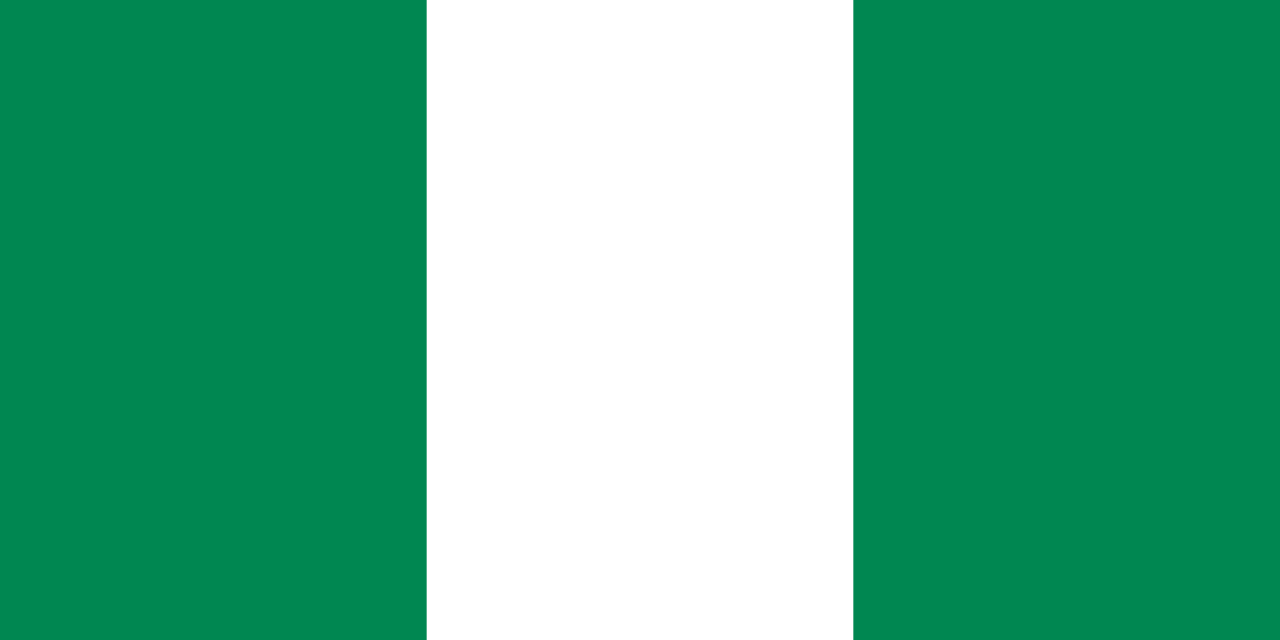
Nigeria
Africa
A vertical tricolor of green, white, and green. The flag was adopted at independence in 1960 and represents agriculture, unity, and peace.
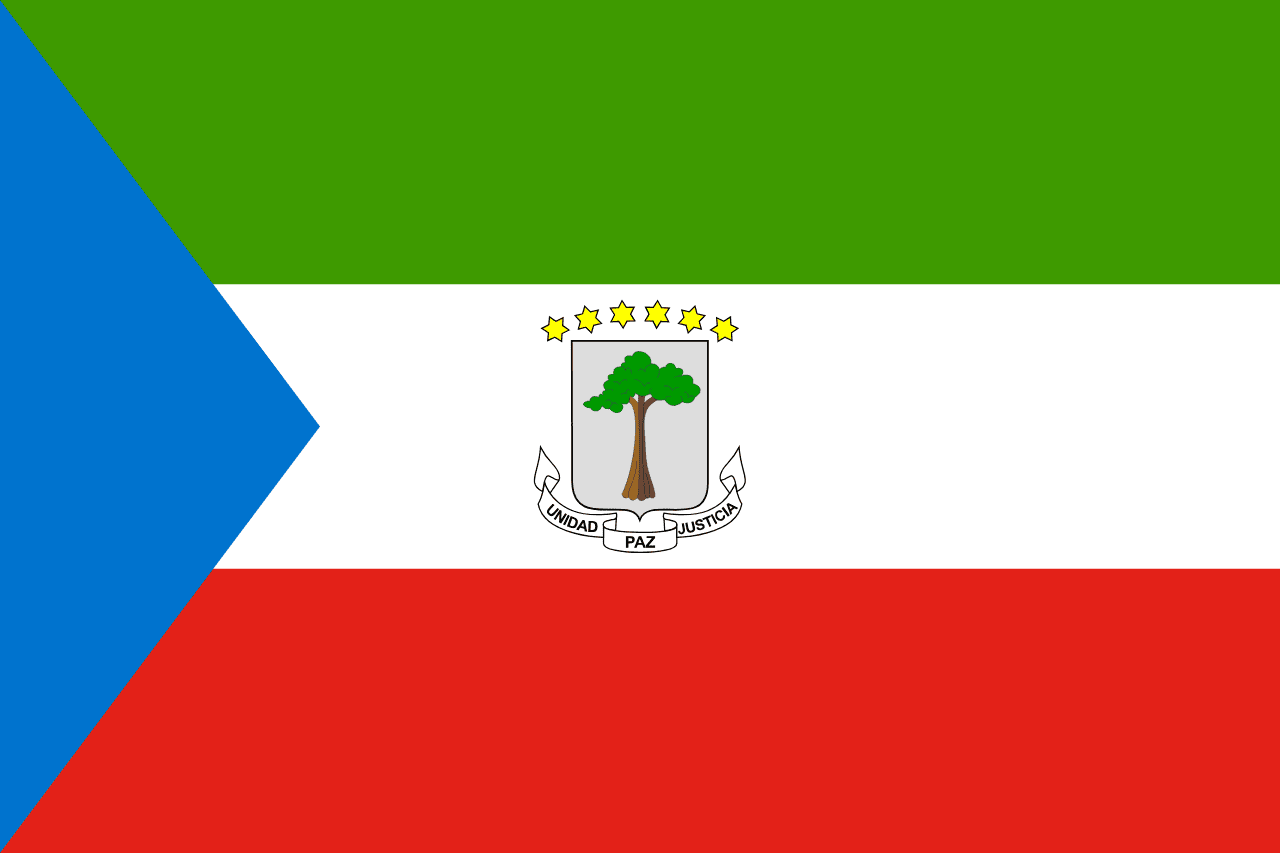
Equatorial Guinea
Africa
Three horizontal stripes of green, white, and red with a blue triangle at the hoist and the national coat of arms in the center, representing the country's forests, peace, independence struggle, and maritime heritage.
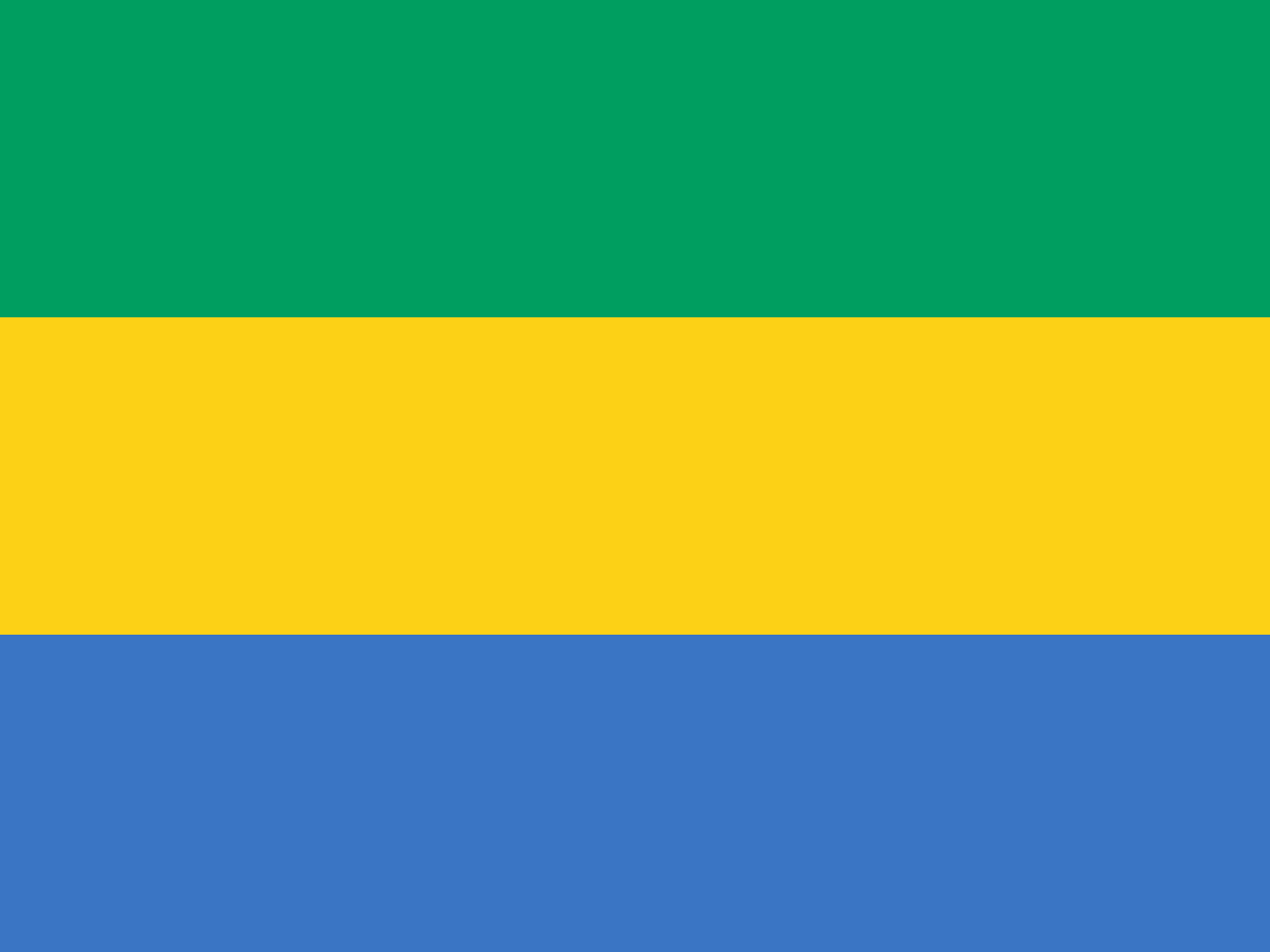
Gabon
Africa
Three horizontal stripes of green, yellow, and blue representing Gabon's equatorial forests, the equator itself, and the Atlantic Ocean, adopted upon independence from France.
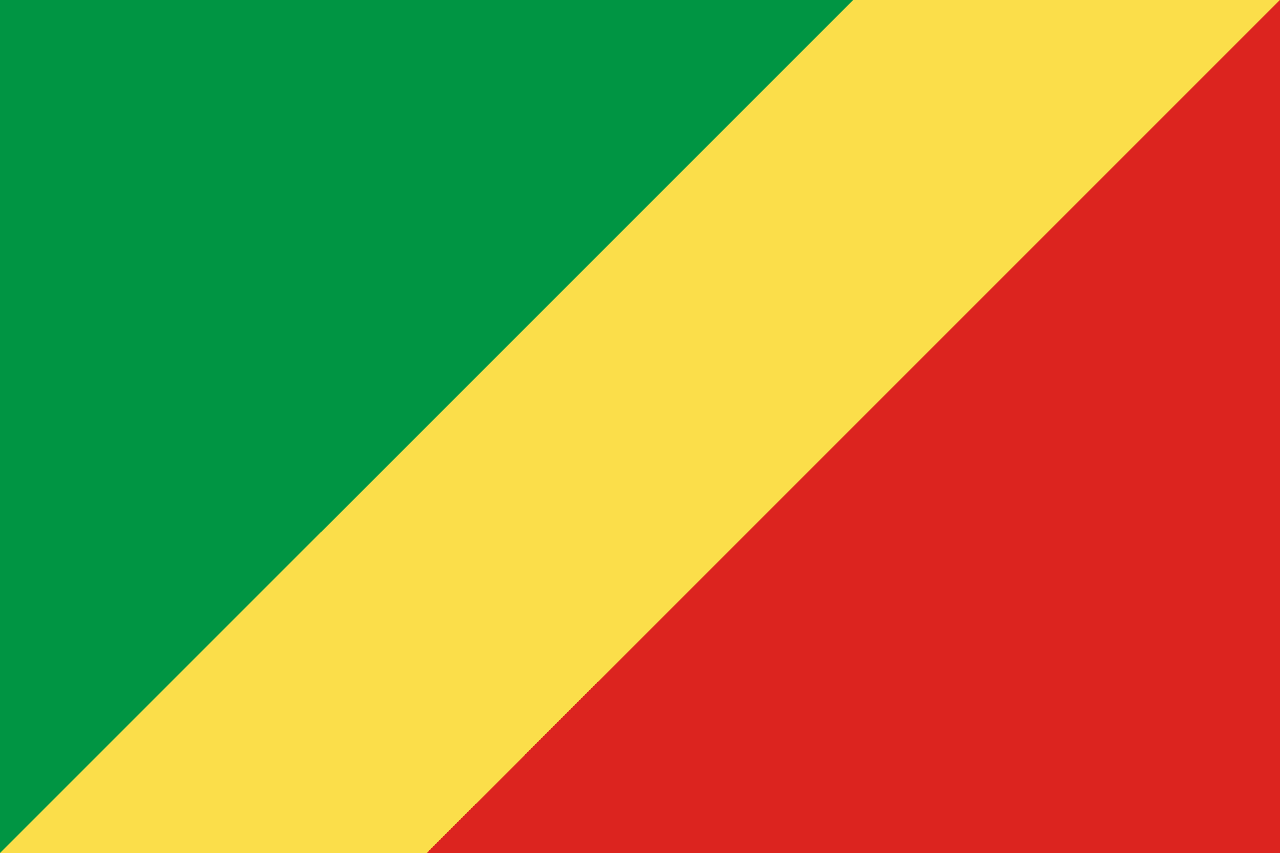
Republic of the Congo
Africa
A diagonal tricolor with green in the upper hoist, red in the lower fly, and yellow diagonal stripe separating them, representing the forests, the struggle for independence, and the friendship and nobility of the Congolese people.
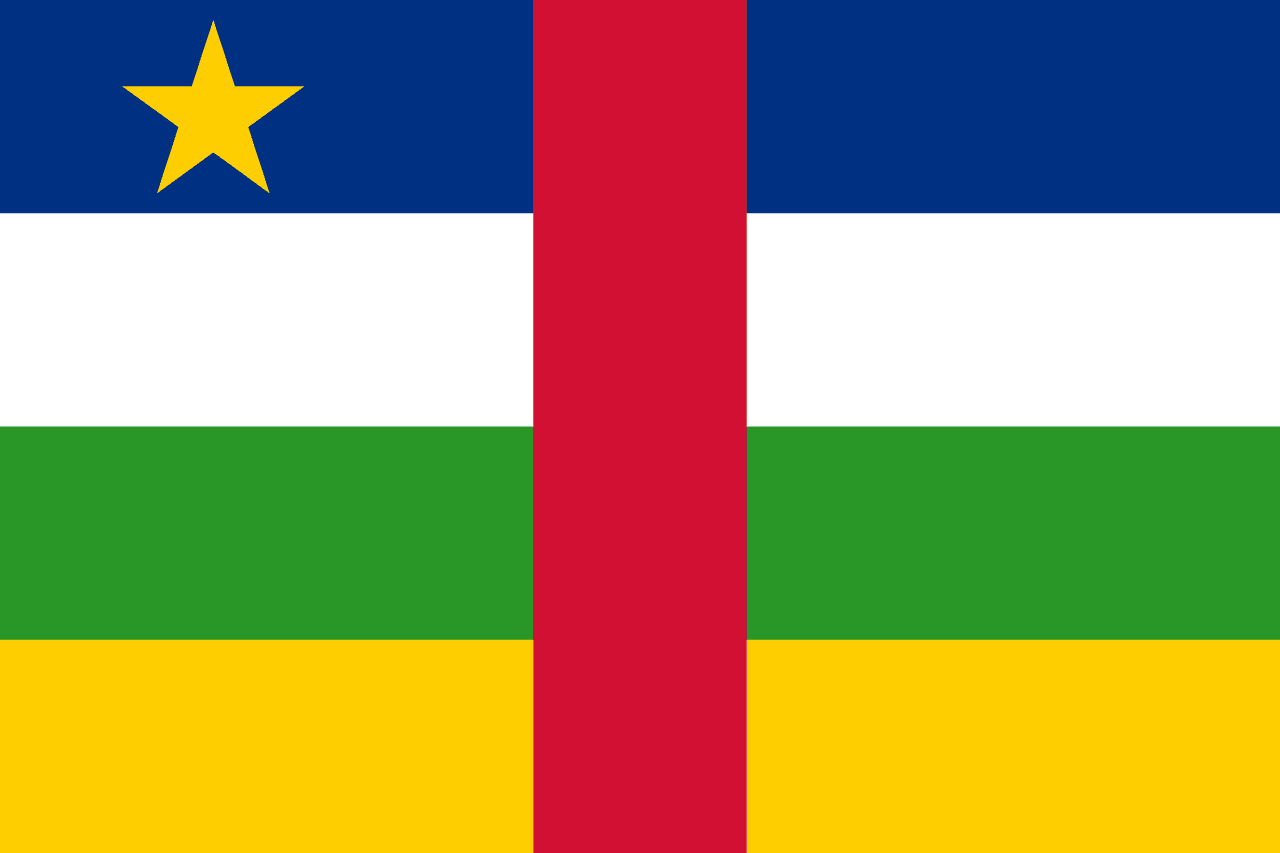
Central African Republic
Africa
Four horizontal stripes of blue, white, green, and yellow with a vertical red stripe through the center and a yellow five-pointed star in the upper hoist, combining Pan-African and French colors to represent unity and independence.
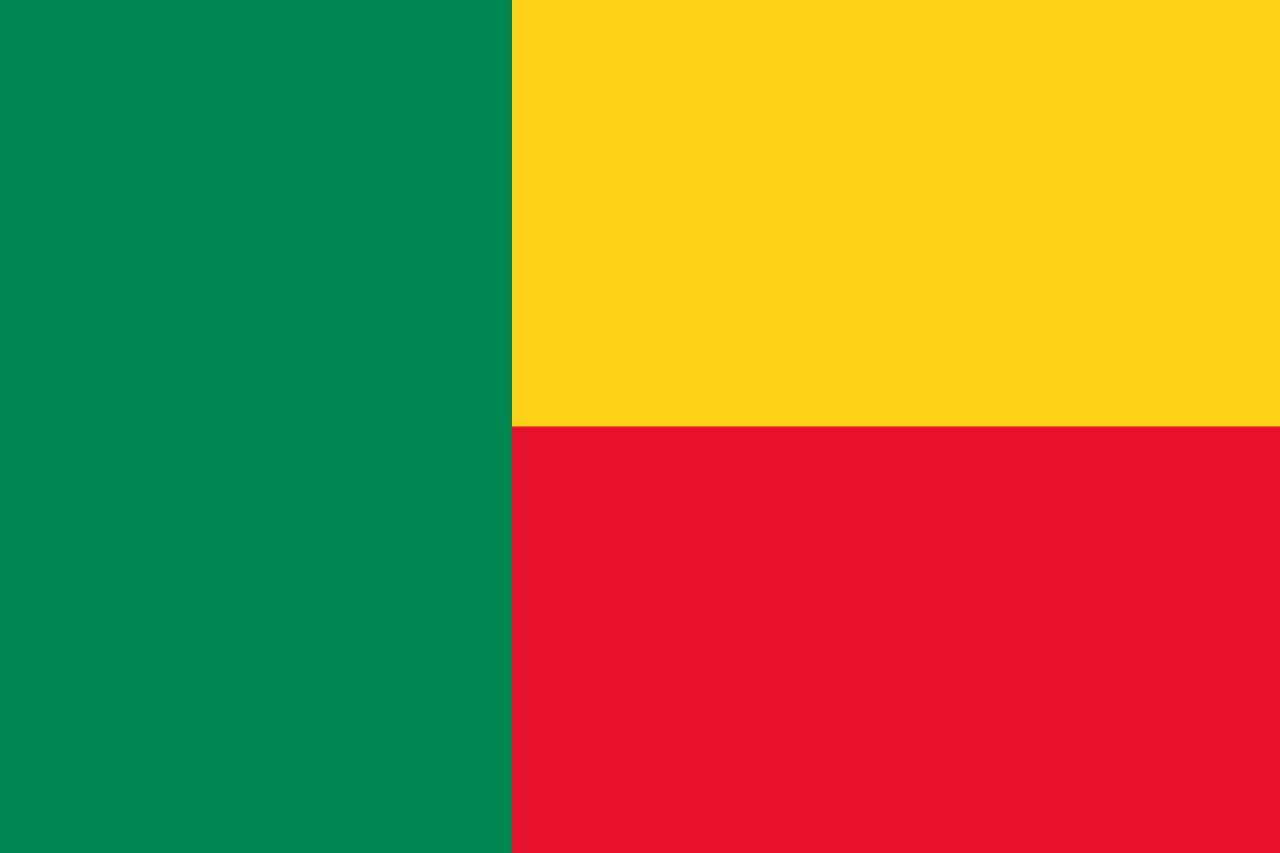
Benin
Africa
A vertical green stripe on the hoist side with horizontal yellow and red stripes on the fly side, representing the forests and hope of the nation, the savannah and mineral wealth, and the courage and blood of the ancestors, using the Pan-African colors that symbolize African unity and liberation.